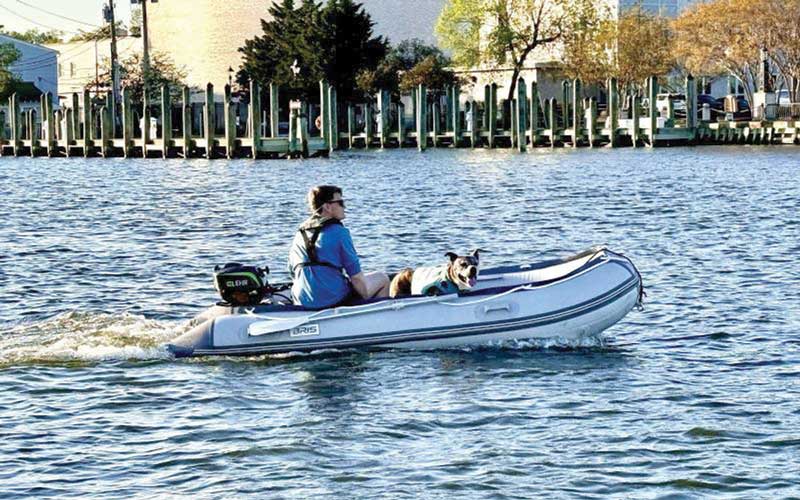As we launch our boats this spring, let’s refresh our memories on common safety practices that smart mariners use. The first five tips below originated from Captain Cheryl Duvall’s article “Lessons Learned from Onboard Mishaps” (find it at spinsheet.com/category/safety), with a PropTalk staff reminder about cold water danger at the end.

1. Know and maintain your vessel. “Avoiding mishaps begins with knowing and maintaining your vessel,” says Captain Priscilla Travis, a member of the Chesapeake Area Professional Captains Association (CAPCA). “Equipment failures frequently occur because maintenance has been overlooked.” Checking fluid levels, belts, bilges, and thru-hulls before each outing should be commonplace… Preparing annual budgets that include routine maintenance can assist in keeping memories fresh and your vessel seaworthy. Pre- and post-cruise checklists, for your own boat or a chartered vessel, are extremely helpful.
2. Instill a culture of safety. Captain Mary Ann DeGraw recently retired after teaching sailing offshore and near shore for 30 years. She never had a student go overboard or sustain a serious injury. Captain DeGraw attributes this track record to establishing a culture of safety, beginning with the basics, including how to step onto a boat (passing items).
3. Do the drills. Another CAPCA member, Captain Doug MacNair, worked commercially on the Chesapeake Bay and learned the importance of emergency drills: “We trained the crew on specific personnel overboard (POB) procedures, including using a harness and a sling to retrieve a live swimmer in the water. At times we’d do a final exam of sorts, when you pile one emergency on top of another, such as POB followed by an engine failure, followed by fire, because you seldom have just one emergency.”
4. Be vigilant about weather. Chesapeake sailors know that weather can be quite fickle, especially during humid summers. Monitor weather apps for potential storms or dangerous wind or wave conditions. When in doubt, don’t go out.
5. Use situational awareness. Situationally aware boaters review their route ahead of time, noting tides, depths, and air draft. They know the rules of the road and navigate by looking up more than looking down, checking weather often. Furthermore, they take care of their health including getting enough rest to avoid fatigue that can compromise decision-making.
6. Understand the dangers of cold water. You’ve been dreaming about that first sunny, 70-degree April day! It seems so easy to hop into a kayak or small powerboat and go boating, yet there’s something you should pay attention to: the water temperature. If the air temperature plus the water temperature adds up to 120 degrees or lower, you could be in serious danger of hypothermia if you fall into the Bay, even if you’re a strong swimmer. Chesapeake water temperatures may be in the low 50s in April. Fifty-three-degree water plus 65-degree air temperature equals 118 degrees—that’s in the danger zone for falling overboard. Always wear your lifejacket. You’ll be much safer out there and last longer if emerged in water. As the folks from the National Safe Boating Council say, “The best lifejacket is the one you will wear.”
Reporting by Captain Cheryl Duvall